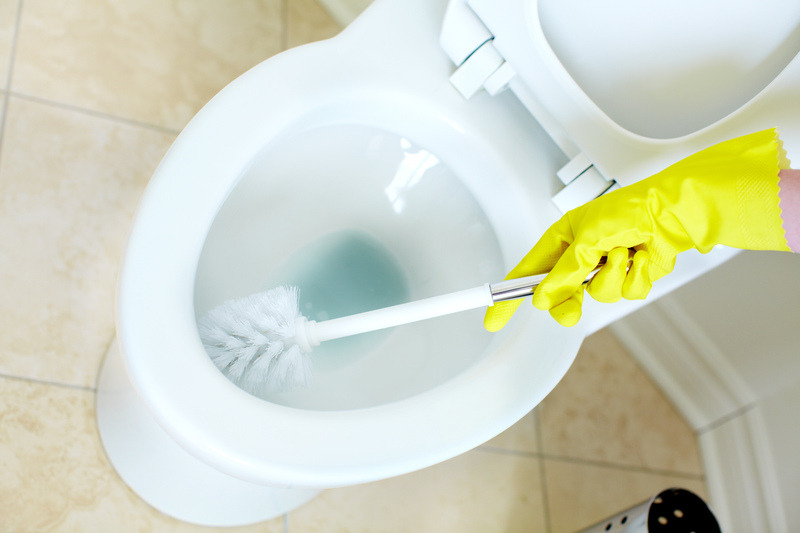Remove Brass Tarnish
Posted on 12/09/2025
Remove Brass Tarnish: Your Ultimate Guide
Brass is a beautiful metal that gleams with an unmistakable luster. However, over time, exposure to air and moisture can cause brass to tarnish, dulling its shine and beauty. Fortunately, removing brass tarnish is a relatively straightforward process that can be done with materials you likely already have at home. In this comprehensive guide, we will explore various methods to remove brass tarnish, tips for maintaining your brass items, and even the pros and cons of each method. Let's get started!
Understanding Brass Tarnish
Before diving into how to remove brass tarnish, it's crucial to understand what tarnish is and why it happens. Tarnish is a thin layer of corrosion that forms on metals like brass due to a chemical reaction with oxygen and moisture in the air. This reaction results in a dull, darkened appearance that can compromise the item's aesthetic appeal.

Materials You'll Need
Here are some common materials and tools you will need to remove brass tarnish effectively:
- White vinegar
- Salt
- Lemon
- Baking soda
- Flour
- Soft cloth
- Toothbrush
- Gloves
Method 1: Vinegar and Salt Solution
One of the most effective and popular methods for removing brass tarnish involves a simple vinegar and salt solution.
- In a bowl, mix equal parts of white vinegar and salt.
- Stir the solution until the salt is fully dissolved.
- Dip a soft cloth into the solution and rub it onto the tarnished brass item.
- For stubborn tarnish, use a toothbrush to scrub the solution into the more intricate areas.
- Rinse the item with warm water and dry it thoroughly with a clean cloth.
Method 2: Lemon and Baking Soda Paste
This is another effective method that uses the natural acidity of lemon combined with the abrasive nature of baking soda.
- Cut a lemon in half and squeeze its juice into a bowl.
- Add a teaspoon of baking soda to the lemon juice and mix to form a paste.
- Apply the paste to the tarnished brass using a soft cloth or your fingers.
- Let the paste sit for about 30 minutes to loosen the tarnish.
- Use a toothbrush to scrub away the tarnish, then rinse with warm water and dry thoroughly.
Method 3: Flour, Salt, and Vinegar Paste
This method combines flour, salt, and vinegar to create a paste that can effectively remove tarnish.
- In a bowl, mix one tablespoon of flour, one tablespoon of salt, and enough vinegar to form a thick paste.
- Apply the paste to the tarnished brass using a soft cloth or your fingers.
- Let the paste sit for at least an hour.
- Rinse the brass item with warm water and dry it thoroughly.
Tips for Maintaining Brass
To keep your brass items looking their best, follow these maintenance tips:
- Regularly dust and clean the brass items to prevent buildup and tarnish.
- Avoid exposing the brass to excessive moisture and air to minimize tarnish formation.
- Consider applying a thin coat of clear lacquer to protect the brass from tarnishing.
- Store brass items in a cool, dry place to reduce exposure to moisture and air.
Pros and Cons of DIY Brass Tarnish Removal Methods
Using DIY methods to remove brass tarnish has its advantages and disadvantages:
Pros:
- Cost-effective: Most ingredients are inexpensive and readily available.
- Eco-friendly: Natural ingredients are less harmful to the environment.
- Convenient: You can clean brass items at home without needing specialized equipment.
Cons:
- Time-consuming: DIY methods may require more time and effort compared to commercial products.
- Variable results: The effectiveness of DIY methods can vary depending on the degree of tarnish and the brass composition.
- Requires effort: Scrubbing and applying pastes can be labor-intensive, especially for larger items.

Takeaways
- Vinegar and salt solutions, lemon and baking soda paste, and flour, salt, and vinegar paste are effective methods for removing brass tarnish.
- Maintaining brass items through regular cleaning and proper storage can minimize tarnish formation.
- DIY brass cleaning methods are cost-effective, eco-friendly but can be time-consuming and labor-intensive.
Conclusion
Removing brass tarnish doesn't have to be a daunting task. With the right materials and methods, you can restore the shine and beauty of your brass items at home. Whether you prefer the vinegar and salt solution, lemon and baking soda paste, or flour, salt, and vinegar paste, each method has its own set of pros and cons. Additionally, following maintenance tips can help keep your brass items tarnish-free for longer. So roll up your sleeves and get started on making your brass sparkle once again!







